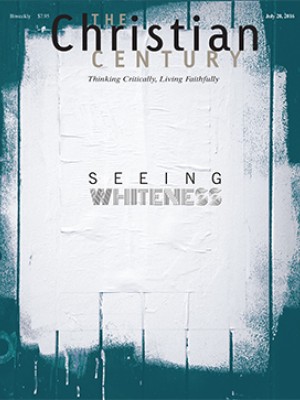Listening in

More than a billion people subscribe to podcasts. More than 39 million people have listened to a podcast in the last month, and one in five podcast listeners listen to six or more per week. Why is this format so popular? As a medium, it’s slower and less interactive than reality television. It lacks television’s visual stimulation, and it requires sustained attention, which experts tell us we are becoming less and less good at.
Many podcasts are interview-based, which hints at what attracts and holds the audience: intimacy. When I walk side by side with a friend, we tell each other stories and comment on one another’s lives. We are in a dance of revealing ourselves and holding ourselves back. We are sharing an intimate experience.
Read our latest issue or browse back issues.
I’m in a somewhat similar position when I’m listening to podcasts. I feel as if I’m being carried into an intimate space of attention and exchange between the voices on the podcast and my own thoughts.
In one of my favorite podcasts, poet Mary Oliver is interviewed by Krista Tippett, host of the radio show and podcast On Being. Although I have read and loved Oliver’s poems and know her voice on the page, the podcast gave me access to the sound of her voice. I was surprised; I didn’t expect a light voice with a huskiness around the edges.
This particular interview was more “exposed” than most On Being interviews. Usually the show is recorded in a studio through a phone line or in person, and any extra sounds are muffled before it’s aired. This helps the listener enter into the conversation without distractions. But the Oliver interview was recorded in her home and included ambient noise. For example, I could hear Oliver shift in her seat. Hearing her move as she tried to get comfortable drew me into the conversation.
At the same time, this intimacy is an illusion—neither Tippett nor Oliver knew I was listening, and one particular listener didn’t matter to them or change their conversation.
Our collective listening, however, does matter. The listeners are actively imagined by the people talking. A podcast interviewer expects the conversation to be between more than the two people, even though they present a two-person conversation. And this paradox—that listeners are both in and not in the conversation—makes the podcast a medium of connective introspection.
Podcasting’s lack of a visual element heightens the sense of hearing. Without the distraction of images, we are carried inside conversations that feel intimate. We move between respected personal boundaries and attractive energies, curious and unashamed of our own curiosity.
In her interview with Anna Sale, host of the podcast Death, Sex & Money, actress Holland Taylor reflected on a period of depression that arrived after she ended her run playing Texas governor Ann Richards in the play Ann. “I was so moved by so many things that happened with Ann,” Taylor said. “I was bathed in emotion all the time, in a very unreal way.” During the interview, she realized for the first time that this absence was a cause of her depression.
“I hadn’t thought of it till this moment,” she told Sale. As she and Sale both paused, I paused with them and felt a transformation beginning.
We live in a culture that encourages us to live at a distance from our inner selves. We’re not encouraged to go exploring, yet we are hungry to go deeper and connect with our deeper selves.
Interview-based podcasts point us toward introspection. Podcasts convey some of the pleasure and energy that we feel in the intimacy of walking with a companion, when we recognize ourselves in another.





